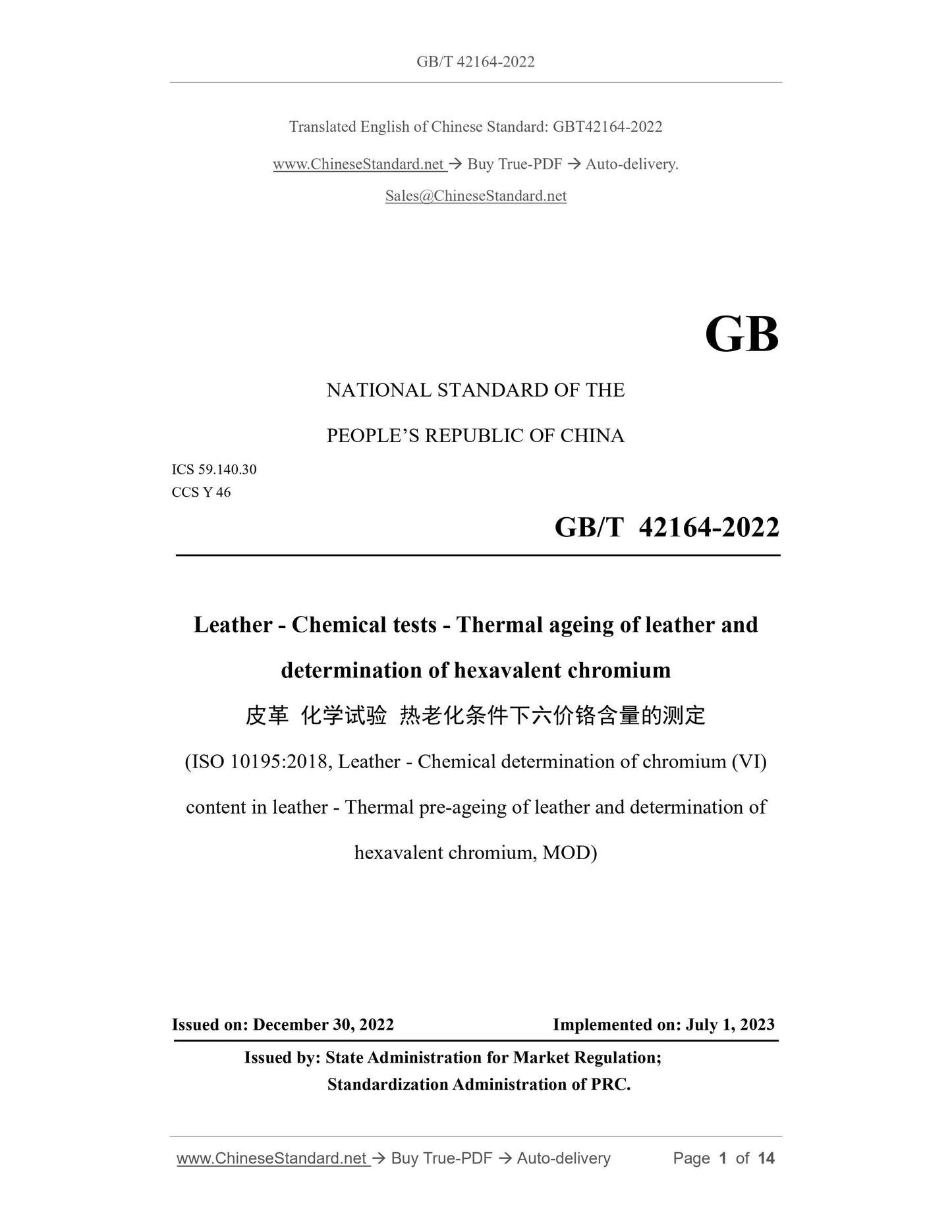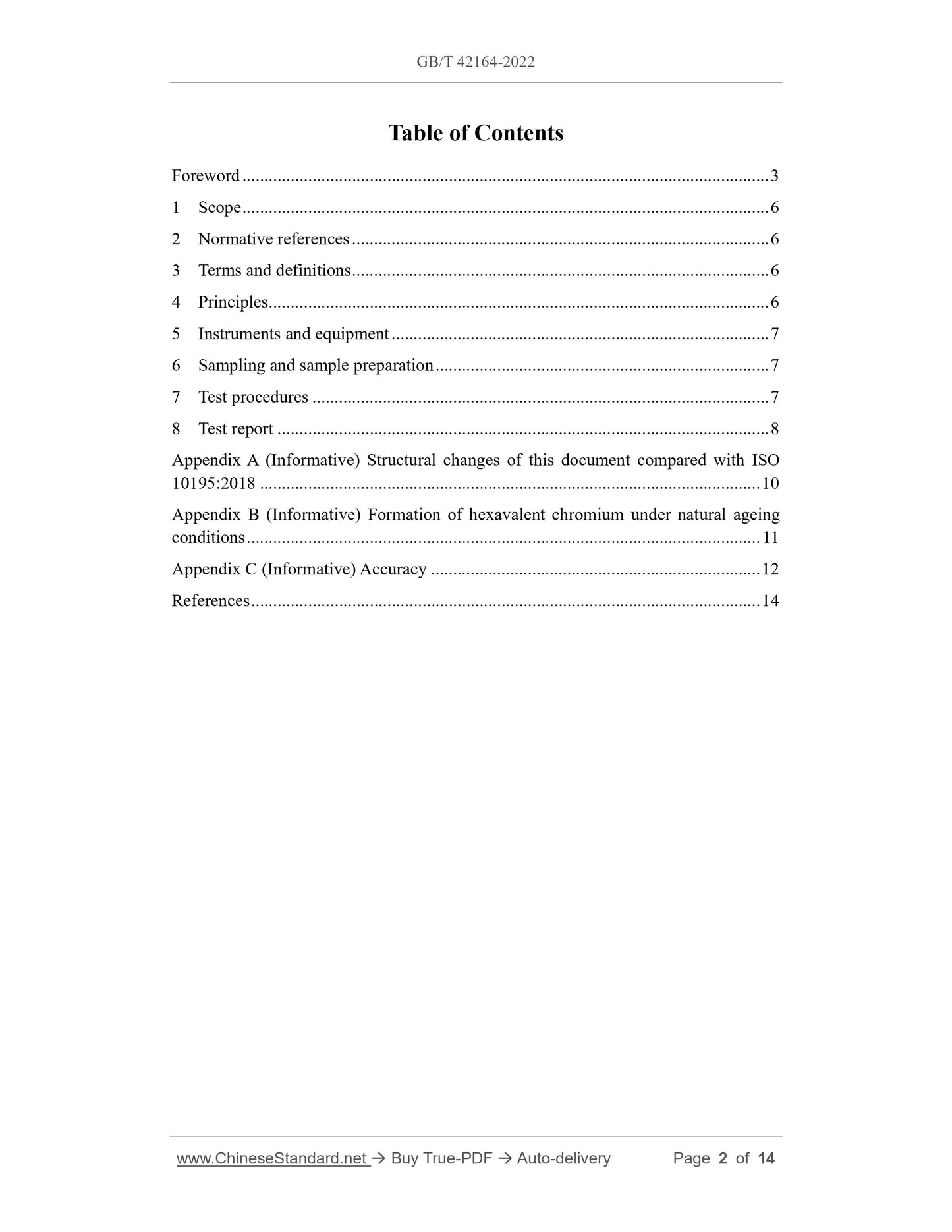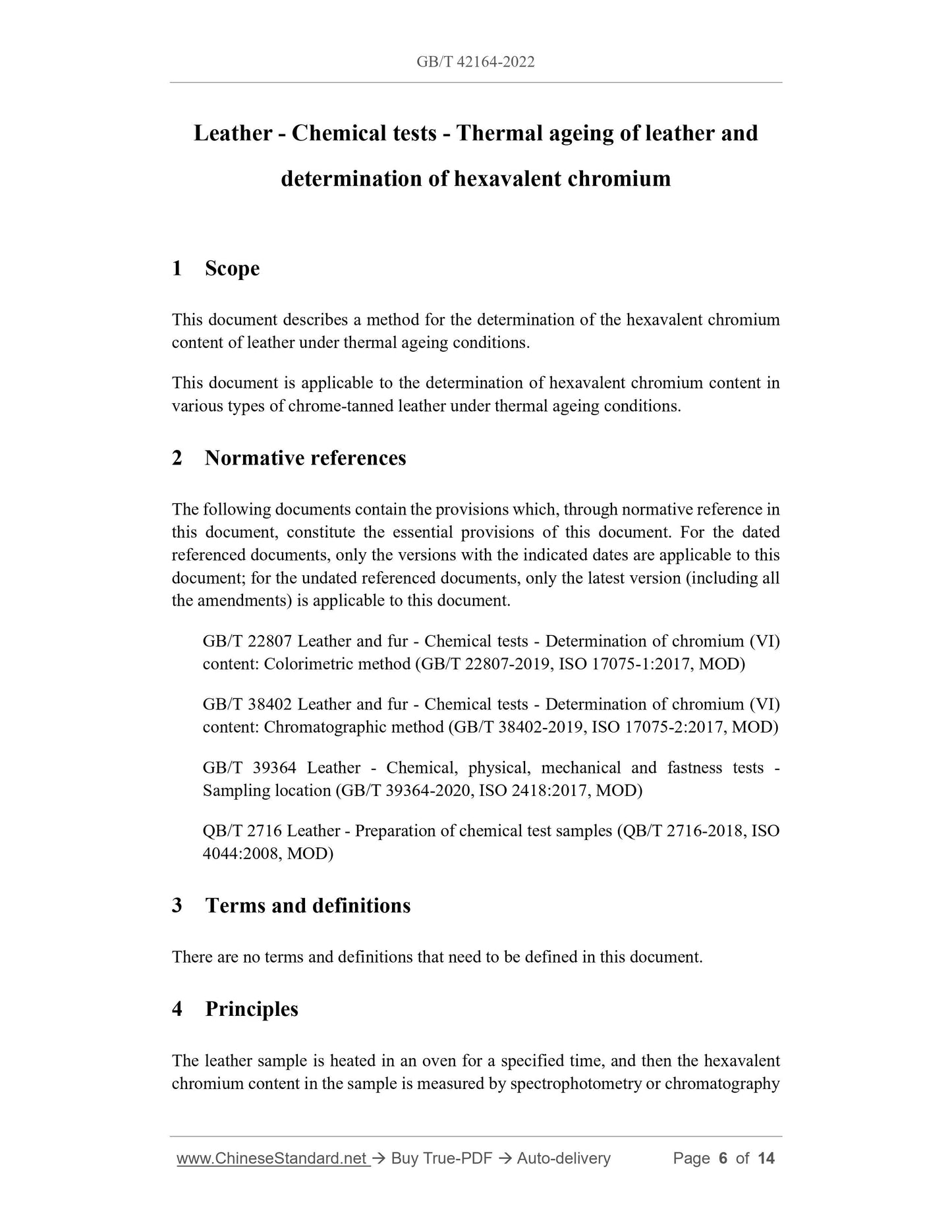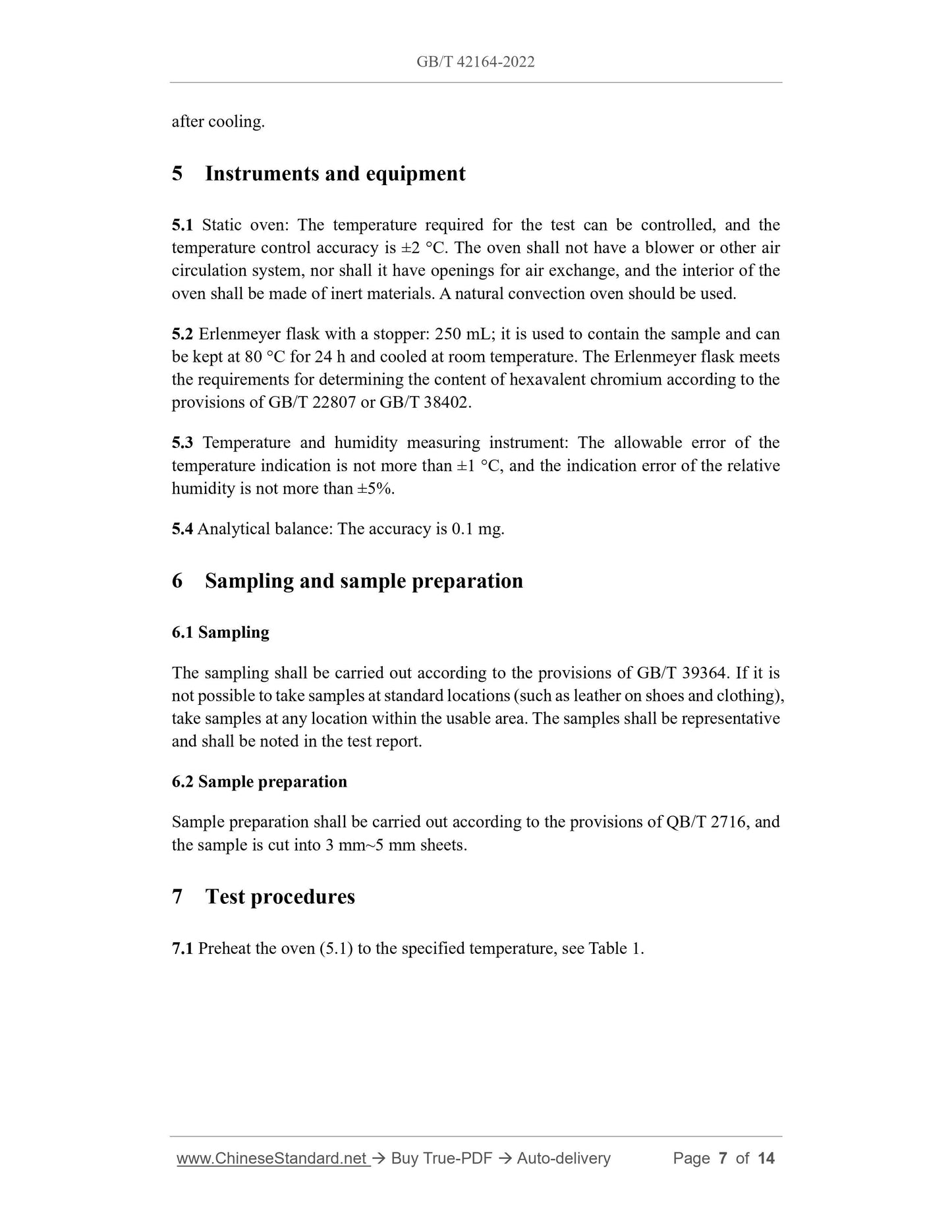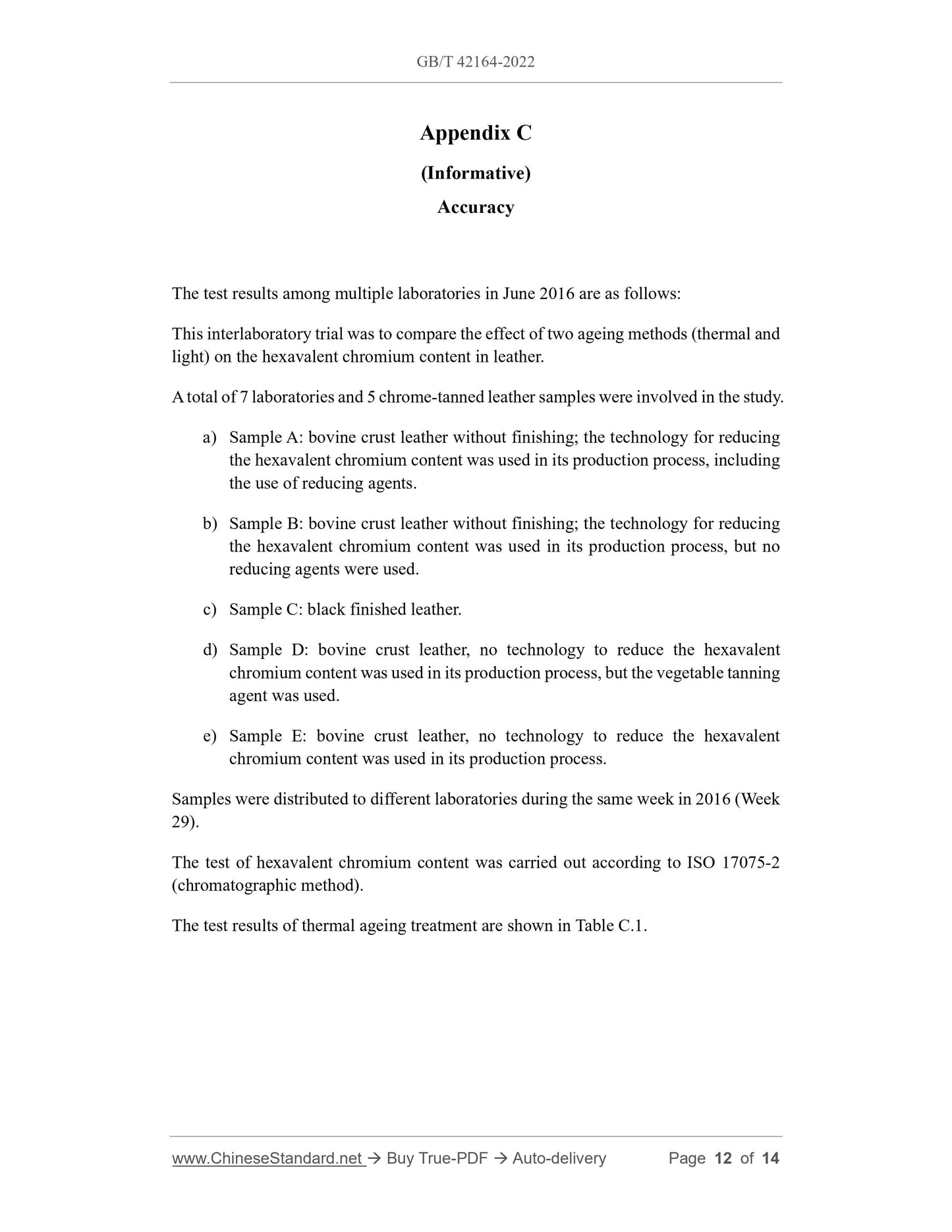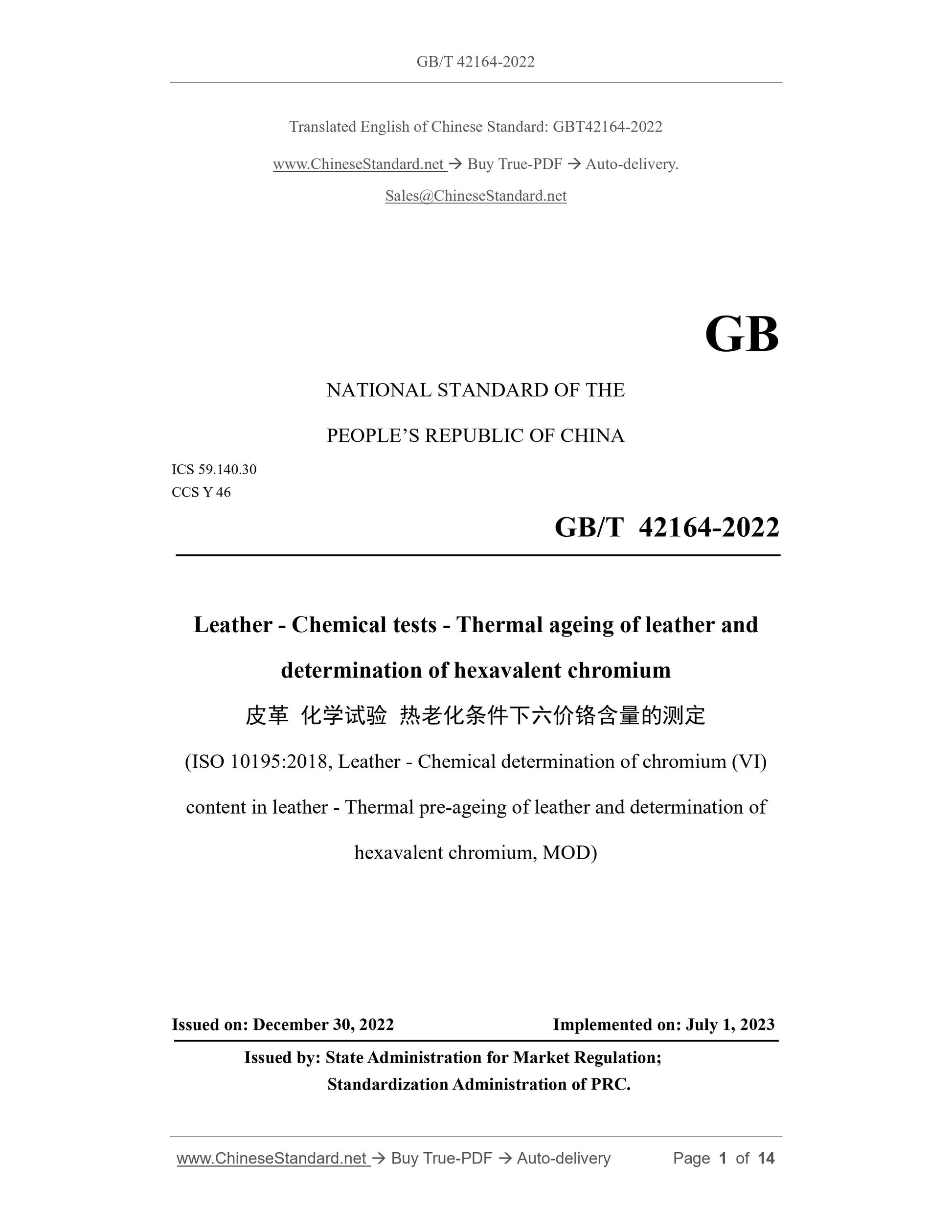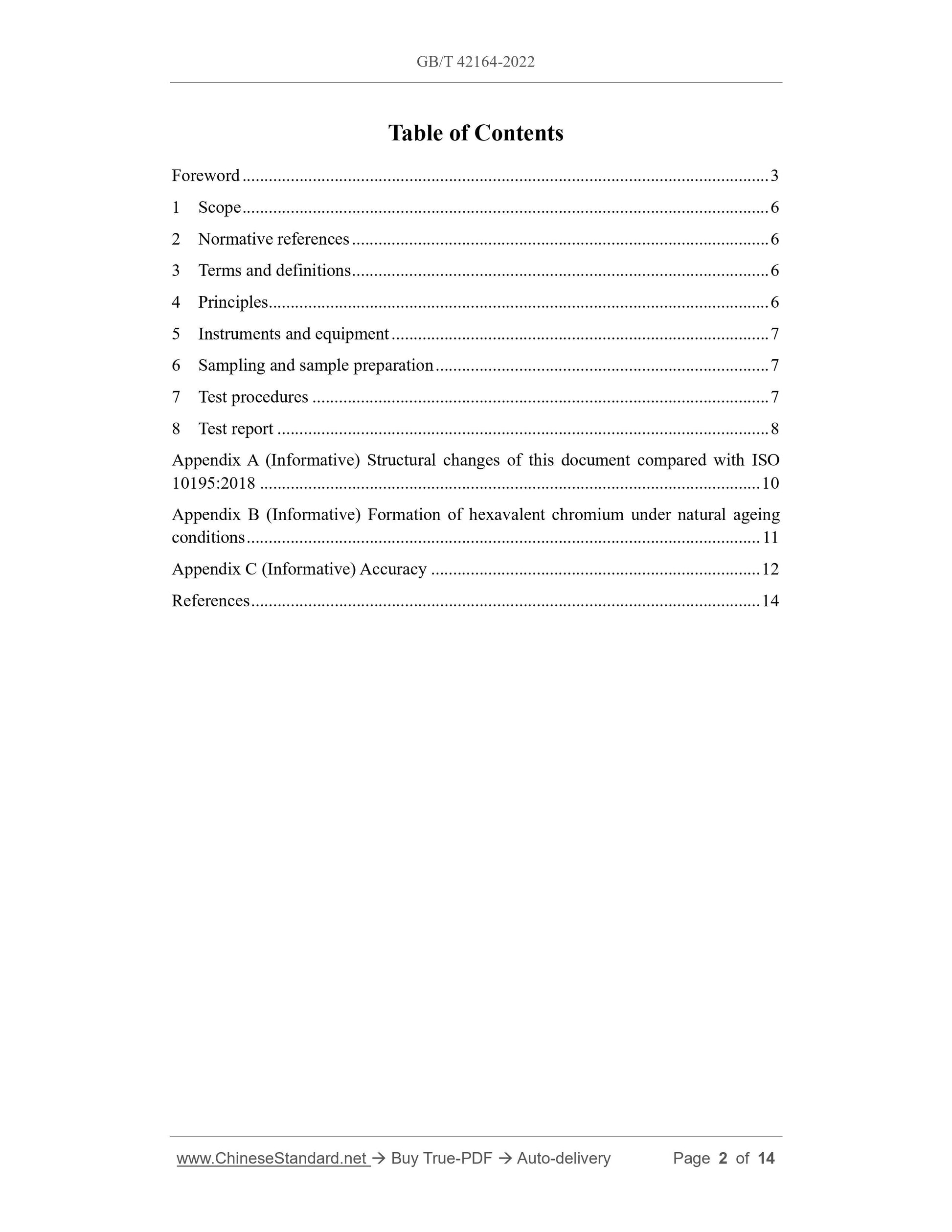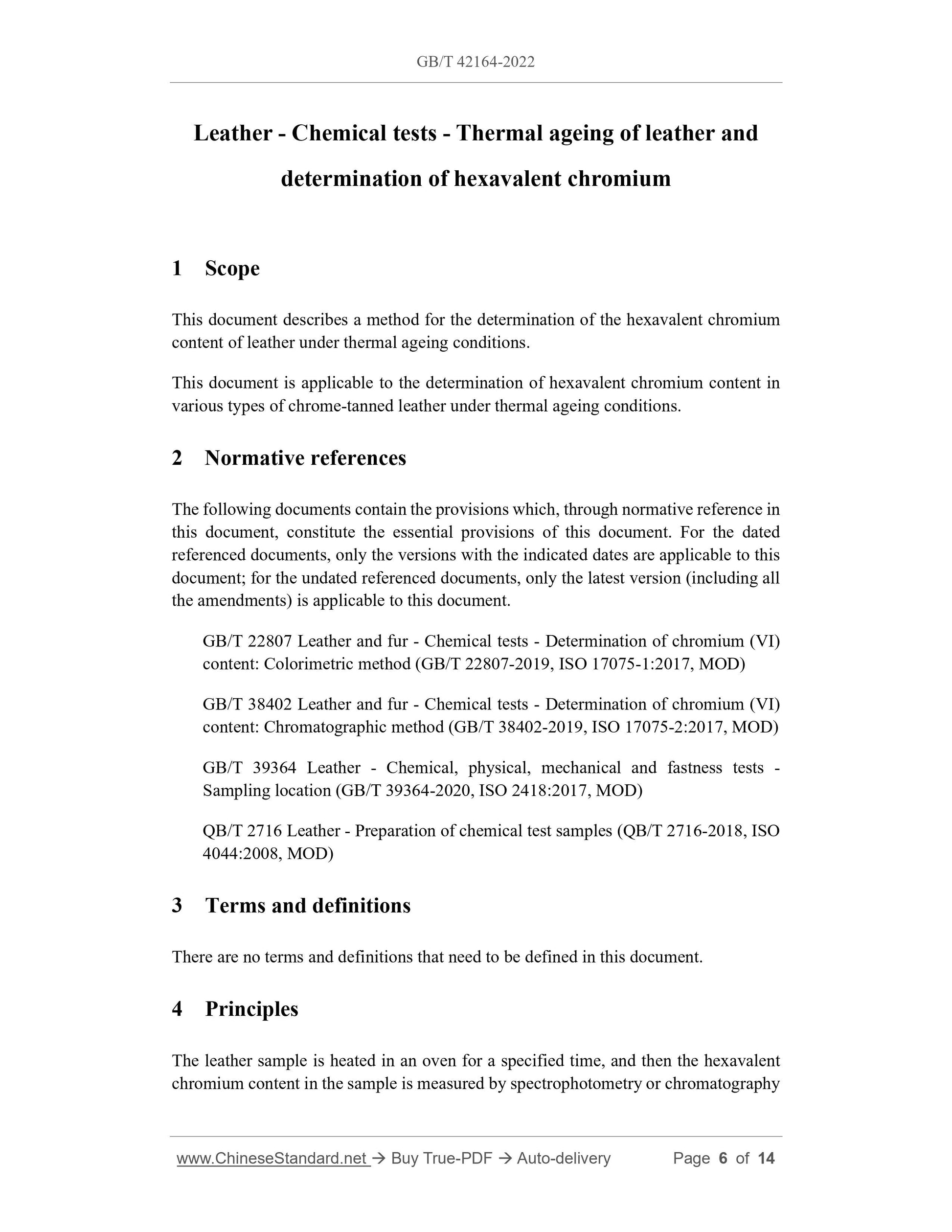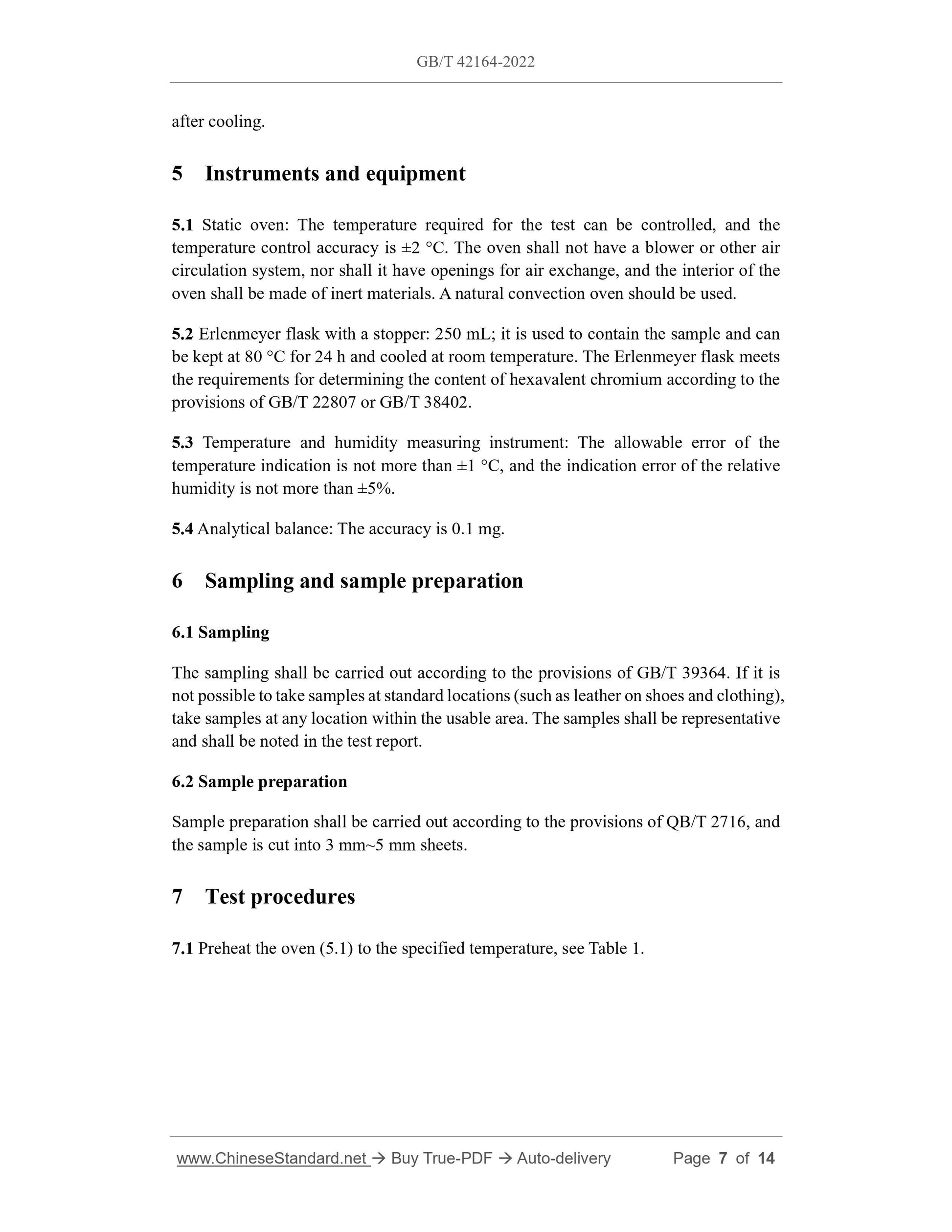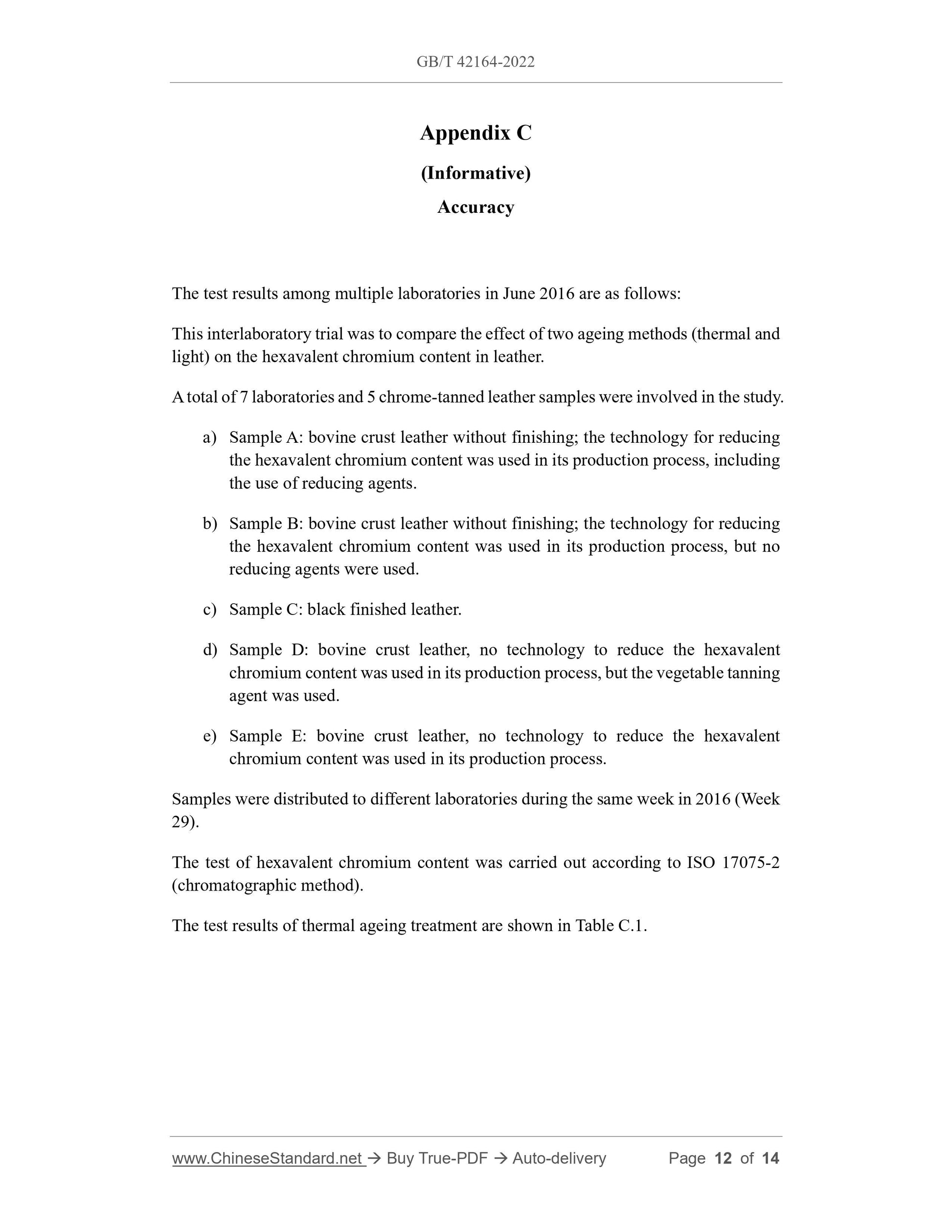1
/
of
5
www.ChineseStandard.us -- Field Test Asia Pte. Ltd.
GB/T 42164-2022 English PDF (GB/T42164-2022)
GB/T 42164-2022 English PDF (GB/T42164-2022)
Regular price
$170.00
Regular price
Sale price
$170.00
Unit price
/
per
Shipping calculated at checkout.
Couldn't load pickup availability
GB/T 42164-2022: Leather - Chemical tests - Thermal ageing of leather and determination of hexavalent chromium
Delivery: 9 seconds. Download (and Email) true-PDF + Invoice.Get Quotation: Click GB/T 42164-2022 (Self-service in 1-minute)
Newer / historical versions: GB/T 42164-2022
Preview True-PDF
Scope
This document describes a method for the determination of the hexavalent chromiumcontent of leather under thermal ageing conditions.
This document is applicable to the determination of hexavalent chromium content in
various types of chrome-tanned leather under thermal ageing conditions.
Basic Data
| Standard ID | GB/T 42164-2022 (GB/T42164-2022) |
| Description (Translated English) | Leather - Chemical tests - Thermal ageing of leather and determination of hexavalent chromium |
| Sector / Industry | National Standard (Recommended) |
| Classification of Chinese Standard | Y46 |
| Classification of International Standard | 59.140.30 |
| Word Count Estimation | 12,139 |
| Date of Issue | 2022-12-30 |
| Date of Implementation | 2023-07-01 |
| Issuing agency(ies) | State Administration for Market Regulation, China National Standardization Administration |
Share
